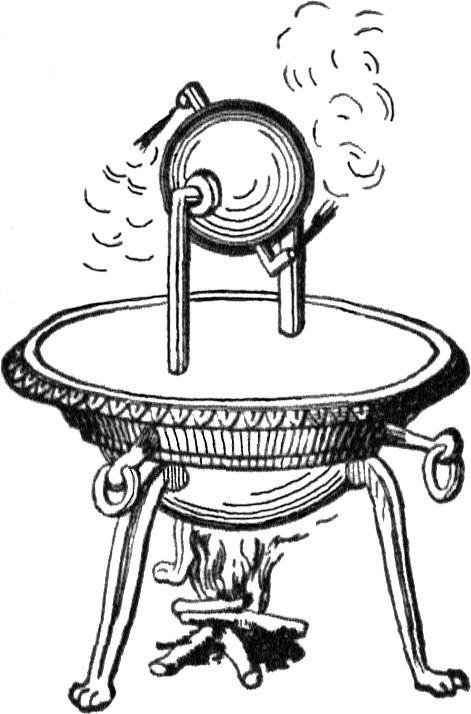Preface
I will refer to intrinsic and apparent changes in motion as forces in this article and future articles to come that don’t explicitly specify involving QFT/GR.
The Aeolipile
We’ve talked the talk about motion. Now, it’s time to chugga the choo choo. Trains move all over the place, but how? In the last article, we learned about Newton’s First Law and how particle forces & curved spacetime create apparent changes in motion. Today, I would like to share the tale of the Hero of Alexandria.
Born in 10 AD and living in Roman Egypt, anything Hero engineered had the potential for being the first of its kind. Hero created the first vending machine, which dispensed holy water for a coin; personally, my favorite innovation of his. He was also rumored to be an atomist, so he already was ahead of his time; but chemistry wasn’t developed yet, so his understanding of how atoms interacted was nonetheless - limited. However, he didn’t need to know chemistry to observe that boiling the holy water produced holy steam.
Hero described in his book Spiritalia seu Pneumatica a device known as the aeolipile, better known as The Hero’s Engine. Simply a hollow ball filled with water that when boiled, generates steam that escapes through two nozzles. When steam is generated within the aeolipile, the internal static pressure of the vessel rises higher than the external static pressure of the atmosphere. Meaning that at the tips of the nozzles, steam can exit with a net force. The force of each molecule of steam shooting out has an equal and opposite force in the direction of motion (Newton’s Third Law); so, the aeolipile experiences torque at both nozzles, which makes the apparatus spin. The aeolipile can be designed with water that boils in the vessel or steam that funnels into the vessel, the only requirement being that net torque must occur for motion; in short, internal pressure must deviate from external pressure. Theoretically, a vacuum aeolipile could suck the atmosphere inside and spin in the opposite direction.

Essentially, the device is a steam engine - that spins itself! Not too practical, but it is exciting that motion at an atomic level (pressure) can be channeled to release a great magnitude of macroscopic motion! Unfortunately, practical uses of steam power were not discovered until the middle sixteen hundreds.
Steam engines, like hydraulics, are driven by fluids. If you forgot, a fluid is an amorphous liquid or gas. Fluids are quite powerful because they move freely to fill the volume it is contained in.
